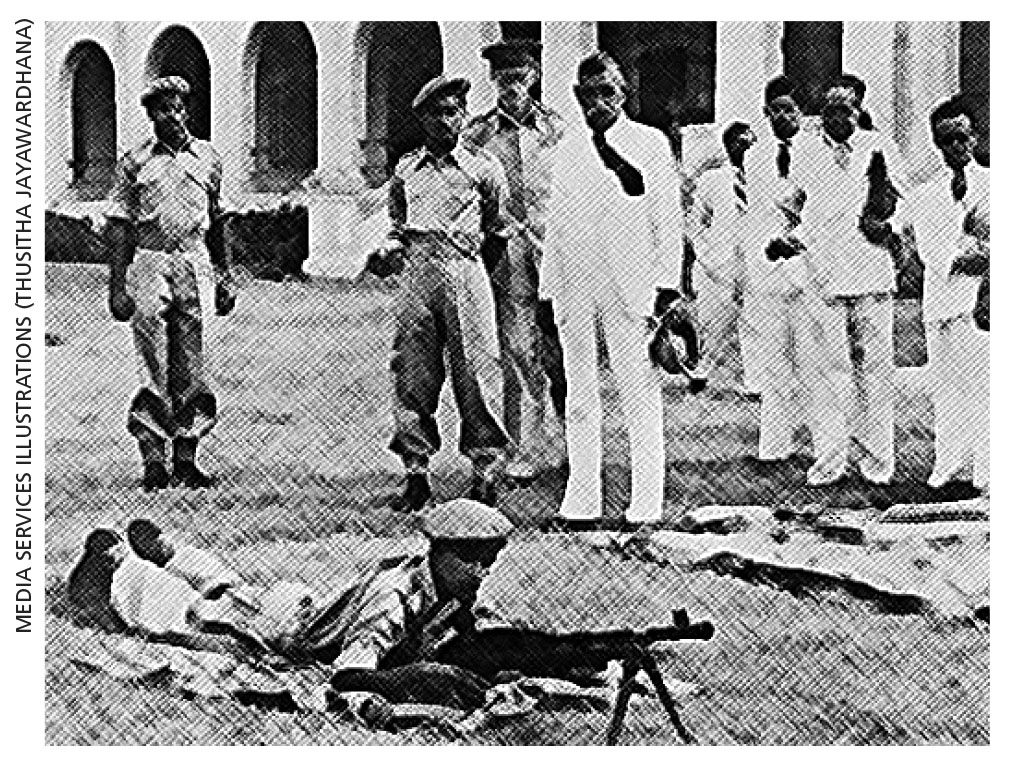1949
The Sri Lanka Army is Established
Long and strong defenders of the nation
A nation’s army is its backbone in more ways than the merely military. And the Sri Lanka Army (SLA) has proven to be a bastion in times the state needed defending as much as its men (and women) and machines that have been a bulwark to support the people of a country when they needed succour – especially in challenging times such as local and natural disasters, and global pandemics, threatening its fair shore.
In its modern-day avatar, the SLA as it is today was established as the Ceylon Army on 10 October 1949 under the Army Act No. 17 of the same year. Its provenance is older than that however, given the enactment of an ordinance in 1861 to employ non-British personnel in the island’s armed forces.
But as far back as 1802, there had been a mixed native regiment – the 1st Ceylon Rifles – comprising Ceylonese, Malay and African soldiers. And later, the authorisation of the colony’s first army corps paved the way for the commissioning of the Ceylon Light Infantry Volunteers following the disbanding of the Ceylon Rifle Regiment in 1874.
From insular colonial service to combatting insidious terrorism and coordinating the defence against the dreaded viral disease COVID-19, the SLA has constantly been at the forefront of serving the country and its citizens.
Since the founding of the Sri Lanka Army in its modern incarnation in 1949 under the command of Brigadier Roderick Sinclair, the SLA has seen the service of 23 army commanders.
The first Ceylonese to command the army was Brigadier Anton Muthukumaru, a dynamic visionary who established the cantonment at Panagoda. And Ceylonese and Sri Lankan cadets have been training inter alia at Sandhurst since 1950.
A women’s corps was founded in 1979, and female army personnel have served alongside their brother officers and other ranks – as doctors, lawyers, accountants, engineers et al – for decades.
The rise of subversive activity by insurgents in the early 1970s that developed into full-blown militancy in the 1980s saw the formation of the first squadrons of what would become the Commando Regiment at the start of that decade.
And the army’s adoption of technology and adjustment to growing levels of threat to national security saw the addition of the Special Forces units to the military’s overall strike capacity.
Together with the regular infantry regiments and armoured corps, these outfits and the air brigade, as well as other army corps such as medical, engineering, supply and transport, and artillery and mechanised units (cavalry) – not forgetting signals and military police – rendered yeoman service during Sri Lanka’s 26 year civil war and also in times of peace, all of which regiments have grown in size and capability.
Today, the SLA is a capacity-based force focussed on nation building. It is also on the front lines of humanitarian operations – being among the first responders in case of drought, floods, landslides and epidemics among other natural disasters that plague the island’s postwar ethos.
From insular colonial service to combatting insidious terrorism and coordinating the defence against the dreaded viral disease COVID-19, the SLA has constantly been at the forefront of serving the country and its citizens




